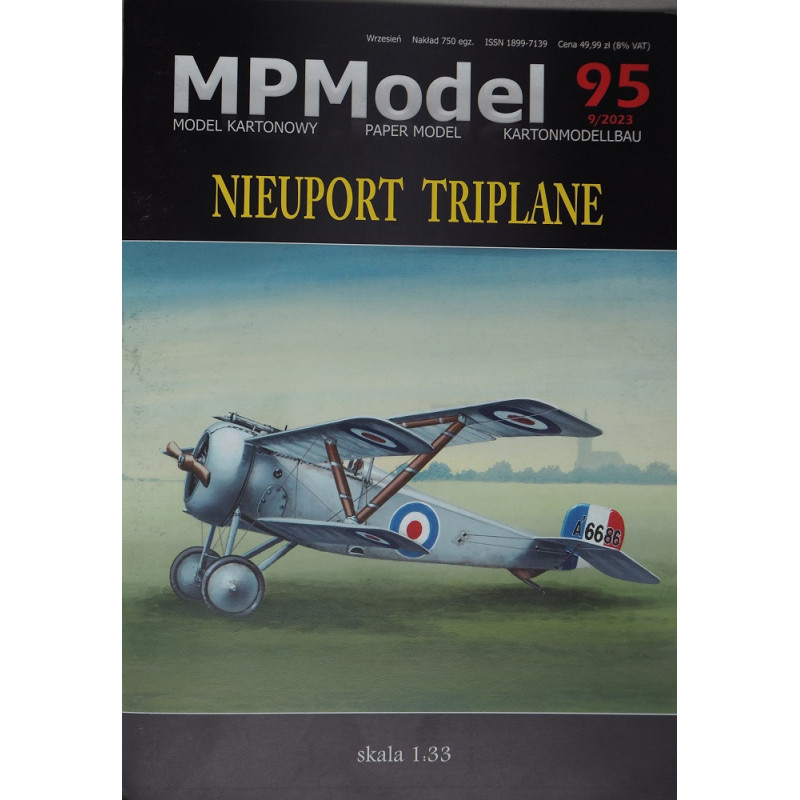






Publisher/ manufacturer: "MP Model". Poland
Scale: 1 : 33
Number of sheets: 5 x B4
Number of pages with details: 2 1/3
Number of assembly drawings: 10
Difficulty: For modelers of any experience.
Model dimensions: 177,5 mm x 242,5 mm x 68,5 mm
 Security policy
Security policy
(edit with the Customer Reassurance module)
 Delivery policy
Delivery policy
(edit with the Customer Reassurance module)
 Return policy
Return policy
(edit with the Customer Reassurance module)
Gustav Delage, the chief designer of the "Nieuport" firm, designed at least two triplanes. The first appeared in 1915 and was a rather strange aircraft, but his 1916 triplane fighter is better known and being even stranger. The middle wing of this aircraft was pushed very far forward, attached to the upper fuselage spars in the front at the level off the top fuselage. The lower wing was attached to the bottom of the fuselage and was pushed to the rear, with its trailing edge, positioned at the level of the cockpit. The upper wing was attached farthest to the rear and was behind the cockpit. The essence of this idea was to improve visibility from the cockpit. The chord of the triplane wing is smaller, than that of a biplane and has almost the same wing-span and area. This allows the aircraft to increase its take-off speed and reduce its turning radius, which is very important for fighters. A triplane could have a smaller wingspan, than a biplane of the same carrying surface area, which allowed the construction of a smaller and lighter aircraft. The fighter was based on the Nieuport Nie-17 fuselage with 110 hp "Le Rhone" engine, and the fighter was armed with a single synchronized "Lewis" machine gun. The aircraft was officially tested in late 1916, but was not ordered by the Aviation Militarie and did not receive an official type certificate. A single example, armed with a cannon, was ordered for the Royal Flying Corps on 26 January 1917, but its flight characteristics were found to be inadequate. The Royal Naval Air Service (RNAS) also purchased one in March 1917, which was built using the Nie-17bis fuselage, and was fitted with a 130 hp power "Clerget" engine. Although assigned to the 11th Division of the Navy, it was written off on June 27, 1917.
A well-detailed model of a small fighter of unusual design, suitable for modelers of any experience. Only advanced beginners and modelers with little experience are recommended to work under the supervision of a more experienced colleague. The parts, that were not painted metal on the original plane and the parts, painted in silver, are printed in the publication with silver "Metallic" type paint. The control surfaces are only separated from the main wings and tail surfaces. The textual instructions are small, but explain the most complex details of the model assembly, the graphic instructions are also small and explain quite well the process of gluing all the parts and assembling the nodes. There are no color stocks.